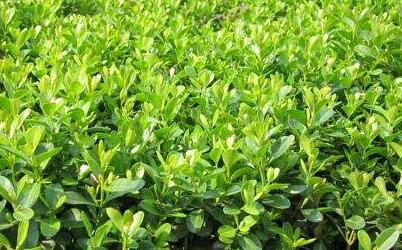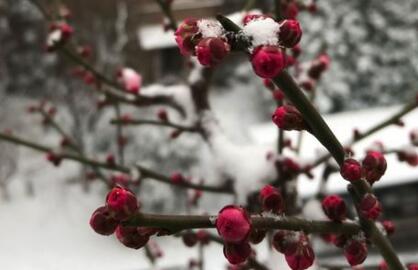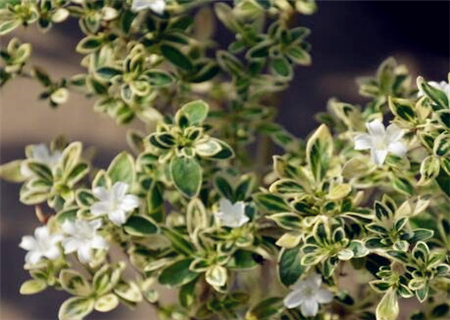How much is the price of small leaf yellow poplar and big leaf yellow poplar? What's the difference between them? How to breed it?
Populus tomentosa, numerous valleys, streams, under forests, 1200-2600 m above sea level. It is produced in many provinces and regions of China, some of which belong to cultivation. Here, let's take a look at the price of small leaf yellow poplar and big leaf yellow poplar. What's the difference between them? How to breed it?

How much is the price of small leaf boxwood and big leaf boxwood?
Second, what's the difference between them?
(1) the morphological difference between Euonymus tomentosa and Euonymus tomentosa.
1. Buxus tomentosa: Buxus tomentosa is a shrub, 2 meters high, stem branches quadrangular, smooth, dense, internodes 3-5 mm long, leaves small, opposite, leathery, elliptic or Obovate, 1-2 cm long, apex obtuse, sometimes retuse, base cuneate, widest at or above middle, with short handle, dark green on surface, yellowish green on back, pilose on surface, glabrous on back, bright on both sides, flowers mostly clustered at the top of branches. The flowers are yellowish green, have no petals and have fragrance.
2. Euonymus tomentosa: Populus tomentosa is a shrub, up to 3 meters high, branchlets quadrangular, finely wrinkled, leaves leathery, glossy, Obovate or elliptic, Cymes 5-12-flowered, peduncle 2-5 cm long, 2-3 branches, capsule nearly globose, about 8 mm in diameter, light red, seeds 1 per locule, terminal, elliptic, about 6 mm long, about 4 mm in diameter, aril orange-red, whole seeds The flowering period is from June to July and the fruit ripening stage is from September to October.
(2) the difference between the efficacy of Euonymus tomentosa and Euonymus tomentosa.
1. Buxus angustifolia: the medicinal parts of Euonymus tomentosa are roots, branches, leaves, bitter taste and flat nature. it has the effects of dispelling rheumatism, regulating qi and relieving pain, clearing heat and detoxification. it is used for rheumatism arthralgia, toothache, chest and abdominal flatulence, colic, falling injury, heat furuncle and so on.
2. Populus tomentosa: the medicinal part of Populus tomentosa is root, bitter, pungent, warm, and has the effect of regulating menstruation and relieving pain. it can be used for irregular menstruation, dysmenorrhea, injury caused by falling, fracture, urinary gonorrhea and so on.
Third, how to breed it?
(1) Populus tomentosa
1. Soil: Populus tomentosa is suitable for planting in areas with open surroundings, sufficient sunshine and good soil conditions of water and fertilizer, remove weeds and gravel, apply mature base fertilizer, rake the ground flat, turn deeply, and ensure that the relative water content of the soil is 75-80%.
2. Planting: the seedlings of Buxus tomentosa are mainly planted in spring, which is usually two or three days before the Qingming Festival in the first ten days of April. the row spacing of plants in the open field is 0.5 × 1.5 or 0.4 × 1.2 meters, and about 1000 to 1500 plants per mu.
3. Watering: Populus tomentosa should replenish water in time from germination to flowering from April to June, spray as much as possible from June to September, properly control water from October to November, water winter water at the end of November, and return to green water in the middle of March next year.
4. Topdressing: Populus tomentosa should be irrigated with 45 kg diammonium phosphate and 30 kg urea per hectare. Urea should be stopped after July to prevent seedlings from overgrowing, resulting in late Lignification of seedlings in winter and being vulnerable to frost damage.
5. Weeding: Euonymus microphylla is planted for 4-5 times in a year. Weeding in the nursery is the principle of weeding. Weeding should not hurt the roots of seedlings. Weeding is deeper, which can increase the ground temperature and accelerate the growth of seedlings.
6. Pruning: Buxus tomentosa has a strong top advantage, its sprouting power is strong, and its branching ability is relatively weak. through proper shaping and pruning, ideal trunk and plump lateral branches can be cultivated, making the tree complete, symmetrical, compact and firm.
7. Overwintering: for 2-year-old Euonymus tomentosa, due to the cold winter and large temperature difference between day and night in some areas, protective measures should be taken before overwintering, such as building nonwovens with bamboo poles before winter, compacting around the bottom of nonwovens, and so on.
(2) Populus tomentosa
1. Soil: Populus tomentosa is not strict on soil. Sandy soil, loam and brown soil can be planted, but it is better to have soil rich in organic matter. Soil preparation requires flat land shape, combined with deep turning, plus organic fertilizer, about 2000 kg per mu.
2. Planting: the seedlings of Euonymus tomentosa are mainly planted in spring, which is usually two or three days before the Qingming Festival in the first ten days of April. the row spacing of plants in open field is 0.5 × 1.5 or 0.4 × 1.2 meters, and about 1000 to 1500 plants per mu.
3. Watering: within 24 hours after planting seedlings, Populus tomentosa is irrigated for the first time, the second time every 3 to 5 days, and the third time every 5 to 7 days. After three times of irrigation, whether or not to be irrigated can be decided according to the weather and seedling conditions.
4. Mid-tillage: shortly after the seedlings of Populus tomentosa were newly planted, most of the soil surface was exposed to the air, not only the soil was easy to dry, but also easy to produce weeds. During this period, intermediate ploughing and weeding should be carried out in time to promote the root development of seedlings.
5. Topdressing: Populus tomentosa needs more phosphorus in the seedling stage, but more nitrogen in the peak growing season, and more potassium in the autumn growth period. 0.4% potassium dihydrogen phosphate solution can be sprayed on the leaves, usually three to four times a month.
6. Shaping: Euonymus tomentosa itself has a strong top advantage, its sprouting power is strong, and its branching ability is relatively weak. Through proper shaping and pruning, ideal trunk and plump lateral branches can be cultivated to make the tree body complete, symmetrical, compact and firm.
Time: 2019-03-21 Click:
- Prev

Where does "plum blossom" of Rosaceae grow? What does it symbolize? Are flowers and fruits edible? Can you cut it?
Plum blossom is the first of the top ten famous flowers in China. Together with orchids, bamboo and chrysanthemums, plum blossoms are listed as four gentlemen, and pine and bamboo are called three friends of the year. So, where do Rosaceae plum blossoms grow? What does it symbolize? Are flowers and fruits edible? Can it be propagated by cutting? Where does the plum blossom of Rosaceae grow?
- Next

When does June snow usually blossom? How to breed it?
June snow generally blossoms small white flowers, the tree is the smallest and the branches are sparse. Like light shade, afraid of the sun, there are many under the leaves and trees in the mountains. Spring planting, or Huangmei rain cutting, it is appropriate to pour shallow tea. So when does June snow usually blossom? How to raise it?
Related
- Fuxing push coffee new agricultural production and marketing class: lack of small-scale processing plants
- Jujube rice field leisure farm deep ploughing Yilan for five years to create a space for organic food and play
- Nongyu Farm-A trial of organic papaya for brave women with advanced technology
- Four points for attention in the prevention and control of diseases and insect pests of edible fungi
- How to add nutrient solution to Edible Fungi
- Is there any good way to control edible fungus mites?
- Open Inoculation Technology of Edible Fungi
- Is there any clever way to use fertilizer for edible fungus in winter?
- What agents are used to kill the pathogens of edible fungi in the mushroom shed?
- Rapid drying of Edible Fungi

